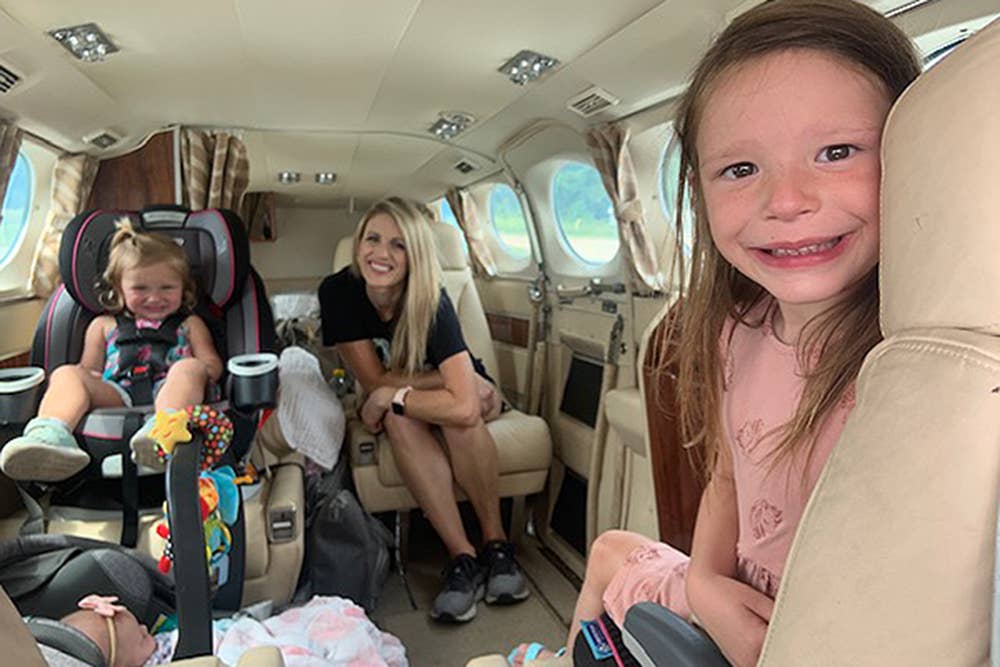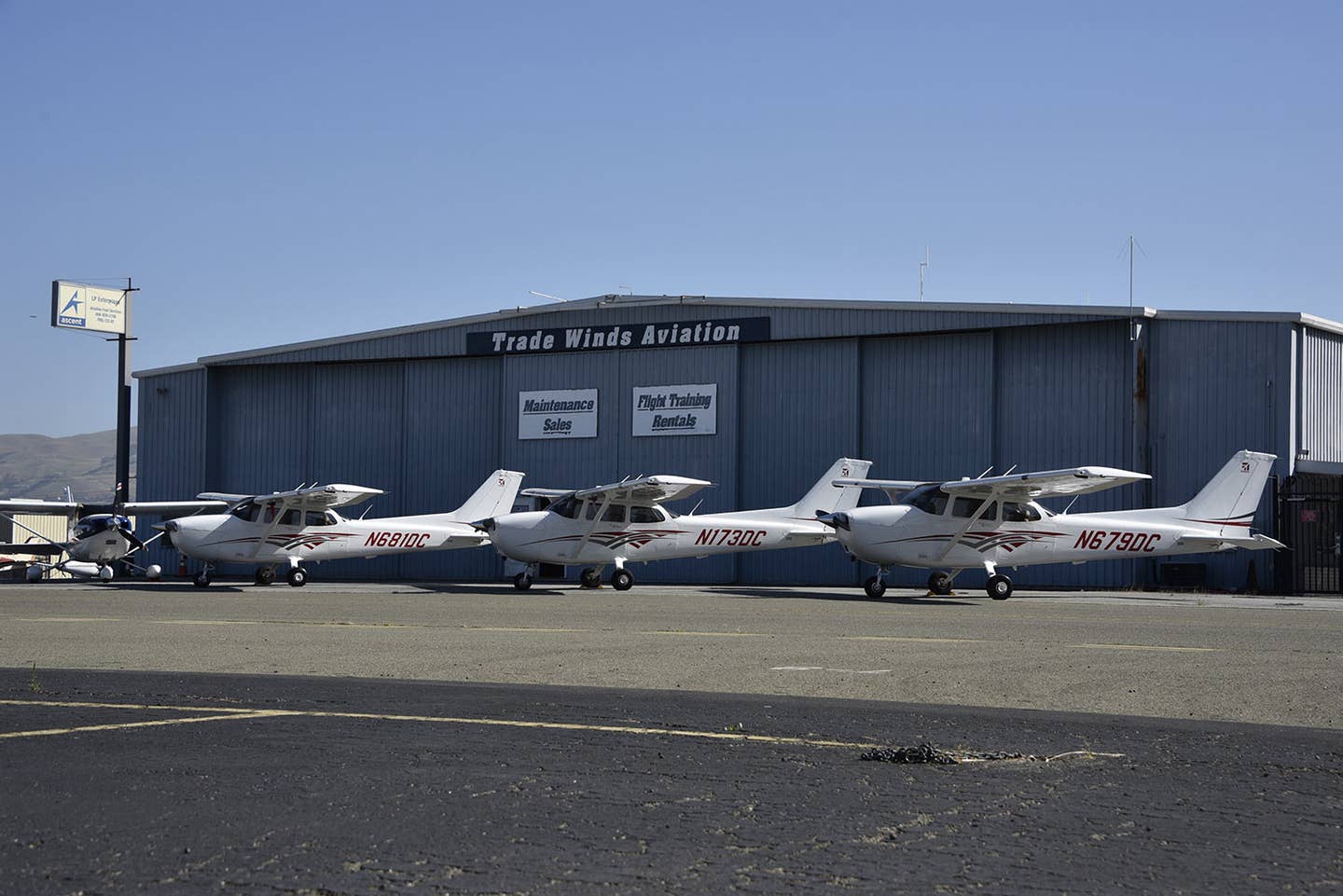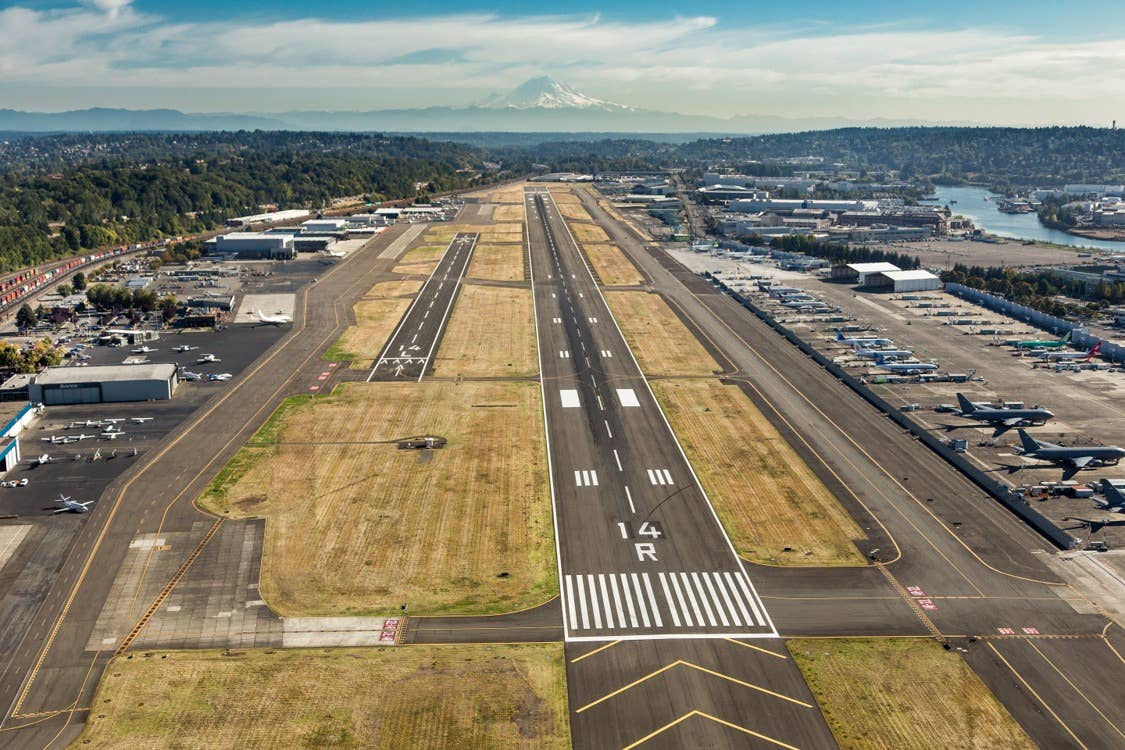Where the Airplanes (and Family) Are
A corporate pilot brings his wife and kids along for the ride in an airpark community.

Rachel Pearcy and three of her children getting set to take a journey. Courtesy: Pearcy family
Stewart Pearcy long dreamed of living at an airpark. While the common move is to wait until you’re retired to make that dream come true, Pearcy decided to make it a reality while still in his career.
For the past year, he, his wife, Rachel, and their four children have resided at Bourland Field (50F) outside of Fort Worth, Texas.
And as a corporate pilot who commutes weekly to Houston for work, the convenience of living feet from a runway is unmatched. Prior to moving on-field, Stewart would have a 30-minute drive to where his aircraft was hangared, another equal amount of time spent performing preflight checks, and then an hour flight. While this totaled about two hours less than a car ride would be, the trip was nearly twice as long as it could have been.
“Early in the morning, it is a heck of a lot easier to grab a cup of coffee and head out to the hangar than it was to drive to the airport when it was still dark out,” Stewart says.
Convincing Rachel
But, this idyllic lifestyle was a tough sell to Rachel, at first. While Stewart provided a list of practical reasons for moving to an airpark, and she resonated with many of them, she was still hesitant.
“We had looked at Bourland Field a few years previously [and hadn’t moved there]. As much as I loved airplanes, even at that time, I wanted to make sure that our kids had a good neighborhood with fellow children to grow up in,” Rachel said.
Eventually though, she came around and saw the kid-friendly aspect of the growing aviation community. The two estimate that amongst the roughly 40 or so homes at the airpark, about 35 kids call it home.
The number of aircraft based at Bourland’s residential segment is also about 50.
“We have all kinds of cool planes on the field—several J-3 Cubs, a bunch of RVs, three Stearmans, lots of Bonanzas, a Meridian, our 421C, and even a Royal Turbine Duke,” Stewart said.
While the Pearcy family’s hangar agreeably “is not big enough,” it currently fits their two aircraft, six bikes, golf cart, dedicated 16-foot-by-12-foot gym area, and “everything else that four kids have.” Taking up much of the space though is their Cessna 421C, which is the family hauler and Stewart’s regular commuter to Houston.
Adding an Aviation Enthusiast
The most recent addition to their 52-foot-by-52-foot stable is a Piper PA-28-180 Cherokee. This aircraft was actually a gift from Stewart to Rachel, which helped cement her appreciation and involvement in aviation.
Prior to the Cherokee’s arrival last summer, Rachel had only recently wanted to learn how to land their 421C. This way she would be able to safely bring the family back to earth if Stewart ever became incapacitated during a flight.
Before she met Stewart, she had been afraid of flying, so learning to fly seemed out of the question.
“I had a fear like most non-aviation people. I didn’t want to ‘fall out of the sky’ and definitely not with our kids,” Rachel says. “[Stewart] would answer all questions and explain everything so that I could understand it. He constantly encouraged me to talk on the radio and help with the checklist to learn more.
“Stewart kept pushing me to start my private, and we would discuss it with neighbors about my interest to learn. But it scared me honestly. Stewart had way more confidence in my abilities than I did. So, after discussing it more, we decided there’s no perfect time because our life is so busy, so let’s just do it now.”
Bringing the Kids Along
Stewart’s children, ranging in age from 5 months to 12 years old, will grow up experiencing this unique living arrangement. Just as Stewart grew up “on and around airplanes,” the couple’s kids will as well.
Thus far, it seems all have enjoyed the opportunity to live in an aviation community. Of the four, though, none of them enjoy it more than the couple’s second youngest daughter.
“I don’t think there is a 2-and-a-half-year-old in the world that can spot something in the sky better than her,” Stewart says. “She will be sitting in the kitchen eating supper with us and our neighbor will take off in his Ryan [PT-22].
“She’ll then say, ‘There goes Mr. John!’”
While Rachel had heard about the convenience of airpark living for a while before actually moving to a community, now she’s fully convinced.
“I didn’t believe initially what others had said about how cool it was to live next to your planes,” Rachel says. “Living at an airpark far exceeded my expectations, not only for the convenience of Stewart and his job, but also for our kids as they see dad leave [taxi out of their hangar]. And the prep work to make aviation possible.”
For example, the kids watched and helped Stewart as he did a recent oil change of the family Cherokee.
Growing the Community
Stewart says there are plenty of misconceptions of airpark living.
“Most people when they think of an airpark they think of retired people. We have a really unique makeup of people here. For example, we have retired airline pilots, current airline pilots, corporate pilots, like myself, firemen and teachers, as well as business owners and others.
“We all share a common interest in aviation, though.”
The Pearcys hope to share their positive experiences at Bourland and in the air with fellow aviation enthusiasts on social media.
In September, they created an Instagram account to showcase their “unique setup.”
Summed up, they are a corporate pilot husband, sports executive/student pilot wife pair that have four kids and live alongside their aircraft. The couple feels they have a different lifestyle compared to many others and think people will be interested in seeing it through the platform.
And for people, especially families, that are looking to live at an airpark, Stewart leaves them with a piece of advice.
“It’s just awesome. Don’t wait until you are retired to live at an airpark. You get opportunities from living at one that you wouldn’t get elsewhere.”

Sign-up for newsletters & special offers!
Get the latest FLYING stories & special offers delivered directly to your inbox






